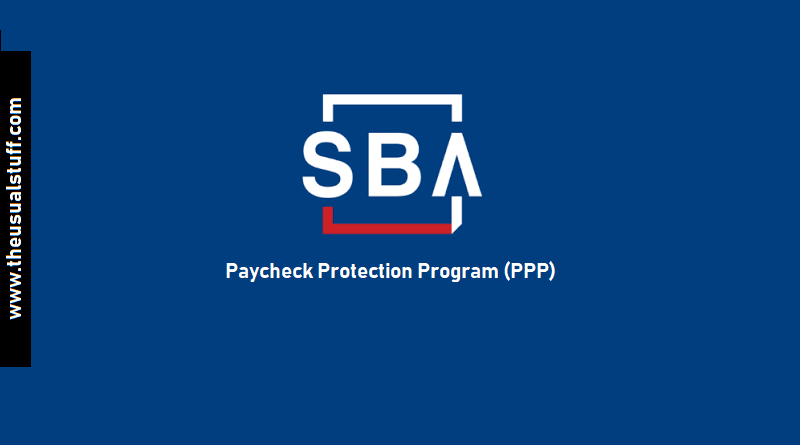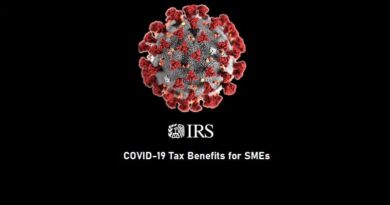Small Business’s Guide to SBA’s Paycheck Protection Program (PPP)
In another article related to the SBA Loans, where I mentioned the number of loans in the form offered by SBA to get through these hard times during these unprecedented times. One of these loans I mentioned is the Paycheck Protection Program primarily meant for small businesses to fund their payroll.
Managing payroll can be an extremely complicated, this is why so many of them turn to the best PEO in Texas or their nearest equivalent, which can manage this along with other HR Tasks. It’s a demanding, and time-consuming job for many small businesses, especially if they have a limited HR department and that’s why a PEO can help a lot in this regard. So see full list on adamenfroy.com to help you find a PEO service if that will help you.
However, even with such a service in place, payroll can be even more difficult if a business is struggling financially. Unfortunately this is the case for many small businesses at the moment.
Since the topic of PPP is slightly descriptive, I’ve decided to write a complete article about the ins and outs of this loan.
After reading this article, you will learn:
- What is a Paycheck Protection Program (PPP)
- Who qualifies for PPP and who doesn’t
- For what purposes the loan can be requested
- What are the forms to be filled and documents required
- How much loan business can receive
- How long is the approval process
- What to do if you don’t have W-2 Employees?
- What are the repayment terms
- How can PPP loan be forgiven
1. What is the Paycheck Protection Program?
PPP is a loan program for small businesses based in the US to support their payroll as well as other short-term operating requirements in order to remain afloat during the hardships caused by the Coronavirus pandemic.
2. Who qualifies for PPP?
A business with less than 500 employees can apply for this loan. The businesses could be operating as an LLC, sole proprietorship, non-profit (501C), independent contractors, etc.
For businesses in the food services or hospitality sector, the limit of 500 employees depends on the location.
Furthermore, in order to qualify for the loan, the business must have been operating as of February 15, 2020.
Businesses ineligible for PPP
Following businesses are not allowed under the payment protection program:
- Businesses promoting religion
- Gambling businesses
- Marijuana businesses
- Multi-level Marketers (MLM)
- Businesses promoting sexual materials
- Businesses not actively managed (e.g. landlord businesses)
- Businesses who lend or speculate funds (e.g. banks and investment companies)
- Political lobbyists
- Businesses with a non-US citizen or a non-lawful permanent resident owning more than 20% stakes.
- Business whose owner has been convicted of a felony in the past 5 years or is presently indicted on formal criminal charges
- Businesses backed by equity funds or venture capital.
3. For what purposes the loan can be requested?
The loan will be issued to the businesses looking to support their:
- Payroll (including employee benefits such as medical, employee taxes, retirements benefits, etc.)
- Lease/Mortgage Payments
- Utilities
- Other operating expenses
4. What are the forms to be filled and documents to be provided to the lenders?
Since the loan applications are first vetted by the SBA Approved Lenders, there can be different forms required by different vendors. However, a basic form that all businesses are required to fill is the Paycheck Protection Program Application.
Other than the form above, the business needs to submit payroll documents like form 940, W-2s, most recent paystubs, etc.
In short, the business needs to submit documents that can prove its calculation of the average payroll.
5. How much loan business can apply for?
A business is eligible to receive an amount that is 2.5 times their average monthly payroll. So you need to calculate first how much average monthly payroll your business pays out.
You can do this by calculating the GROSS payroll paid in 2019 and then divide it by 12 and then multiply by 2.5.
The gross payroll includes the benefits as well.
For instance, in 2019 if you paid $100,000 in wages and $20,000 in benefits then you can request a loan of $25,000. Here’s how:
$100,000 + $20,000 = $120,000
$120,000/12 = $10,000
$10,000 x 2.5 = $25,000
What is included in the calculation of Gross Payroll?
You can include:
- Wages/Salaries expense (not greater than $100,000 per employee)
- Benefits provided (such as medical/retirement benefits etc.)
- Overtime
Can contractor payments be included in the payroll cost?
This is an important question and quite recently, the SBA had to address this issue.
The SBA categorically declared that you CANNOT include contractor payments in the calculation of gross payroll. This means that you can exclude all the 1099-MISC payments made to your contractors.
6. How long is the approval process?
Since there is no standard policy and the time may differ from lender to lender, speaking from my own personal experience, my clients have received a response within 3-5 business days from their respective lenders.
7. Can a business apply for PPP if it doesn’t have any W-2 Employee?
Since you cannot include the contractors payments in the calculation of the PPP loan this raises one important question.
Are you even eligible to apply for the PayCheck Protection Program if you do not have any W-2 employee? Or in other words, what if you’re a sole person managing your entire business?
Well, the answer to this question is that if you don’t have any W-2 employees in your business, then you can apply for the loan based on your net income displayed on your Schedule C (Profit or loss from business) form. This is something that many people do According to Curo Financial and their figures, but there is plenty to keep in mind before you do this.
The amount that you can apply for is the same which is 2.5x of your net income with the cap of $100,000. This means that the maximum loan that you can apply for is $100,000 x 2.5 = $250,000.
8. What are the repayment terms of PPP?
The repayment starts after 6 months from the date the loan is received. Full loan payments along with the interest are to be paid within 2 years.
The interest rate on the PPP loans is capped at 4%. That’s of course if the loan isn’t forgiven.
9. How can PPP loans be forgiven?
For forgiveness of the PPP loan, the business must ensure that the loan (at least 75% of the loan amount) is utilized in funding the payroll (of the employees not earning more than $100,000). Second, the business should not lay off any of its employees or lower their payroll within the 8-weeks period.
If they did lay off, to ensure forgiveness, they can rehire. This does not need to be the same person though which means that SBA is just interested in the headcount.
If due to the dire situation, a business has to let go of any of their employees or reduce their salaries and benefits, their forgiveness amount will be shrunk accordingly.
Final Word
While the PPP is there to help businesses in these unprecedented times, there’s a catch. And that’s the loans are granted on a first-come-first-serve basis. So if you haven’t yet applied for the loan, I’d advise you to do so ASAP because you never know when this opportunity runs out.




